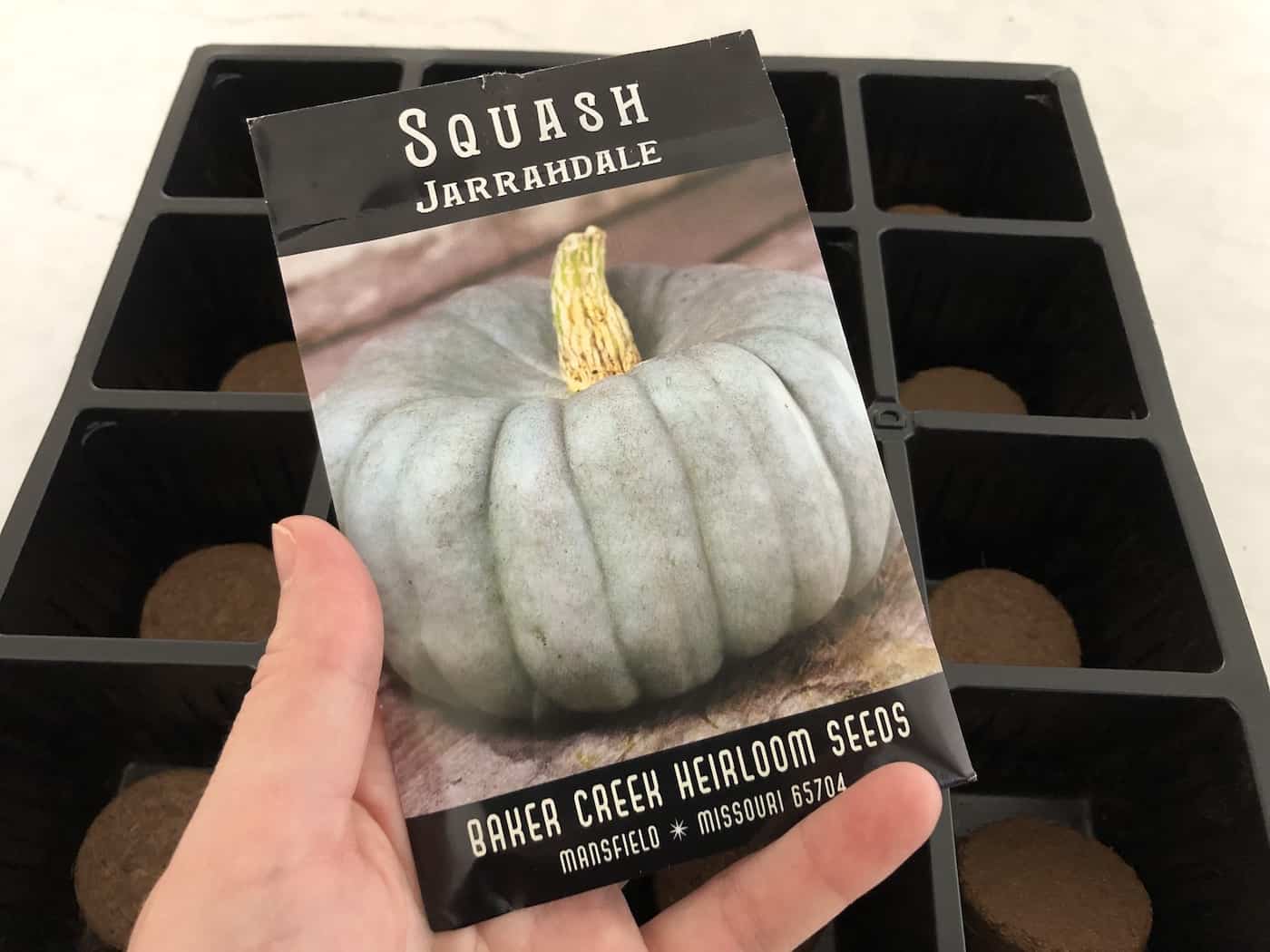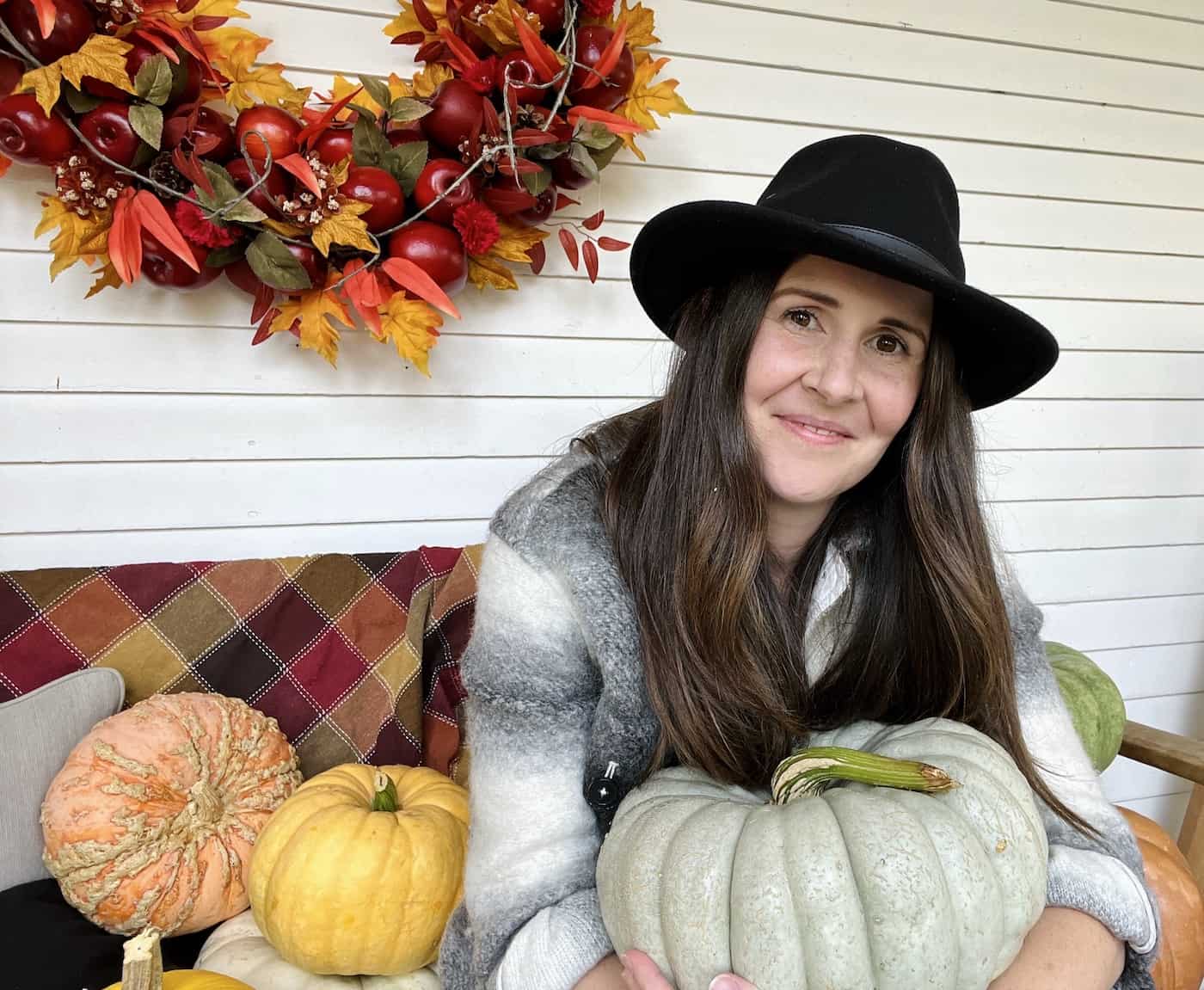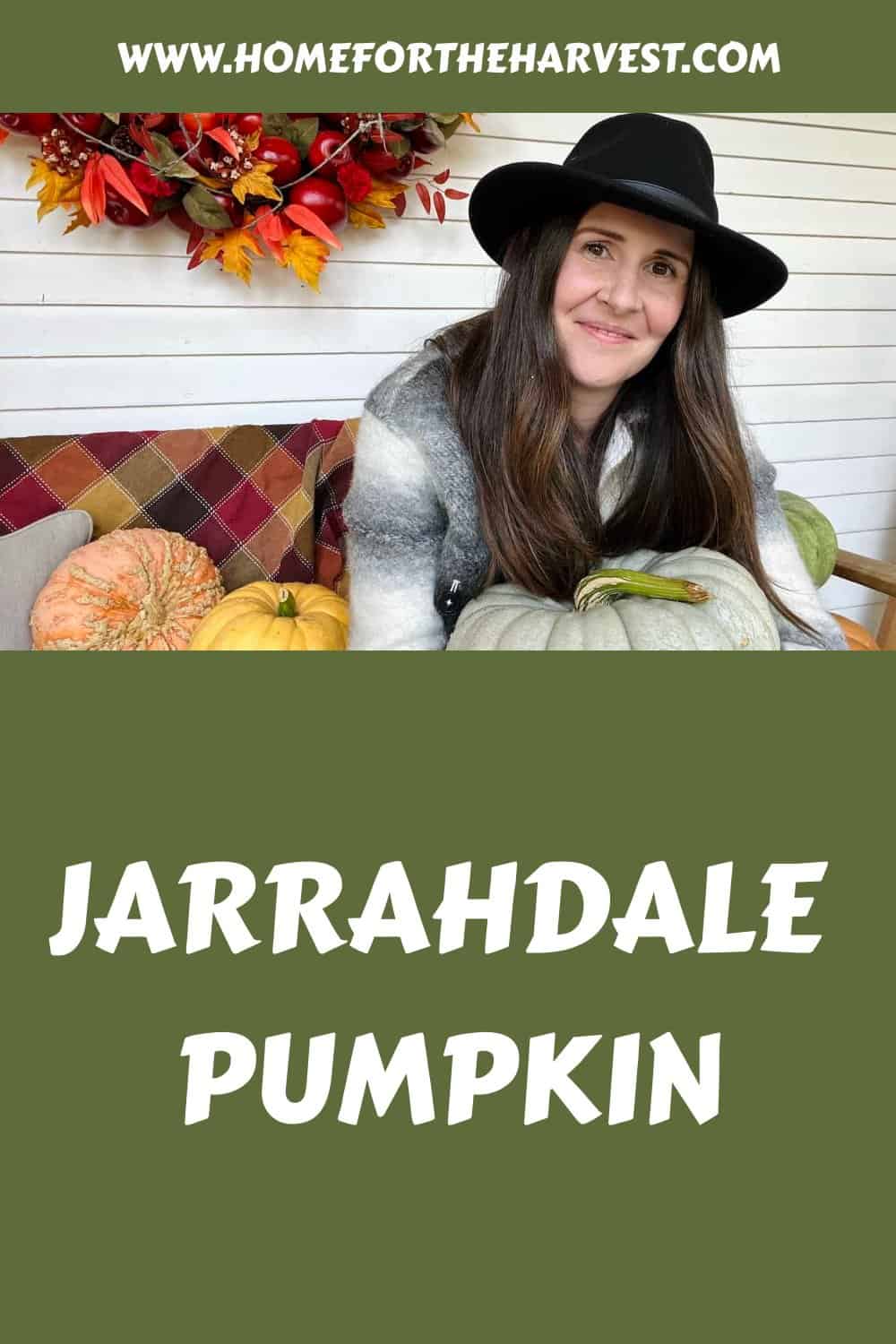Looking for one of those classic blue-green heirloom pumpkins? You just might be searching for the Jarrahdale!
The Jarrahdale pumpkin is a medium-large heirloom pumpkin cultivar with a distinctive blue-grey peel color. The average weight of a ripe Jarrahdale pumpkin is 6-18 pounds, and the pumpkins generally have pronounced ribs. This pumpkin is an excellent all-around choice, as it is well-suited to autumn decor, cooking, and for long-term storage.
Read on to learn all about Jarrahdale pumpkins!
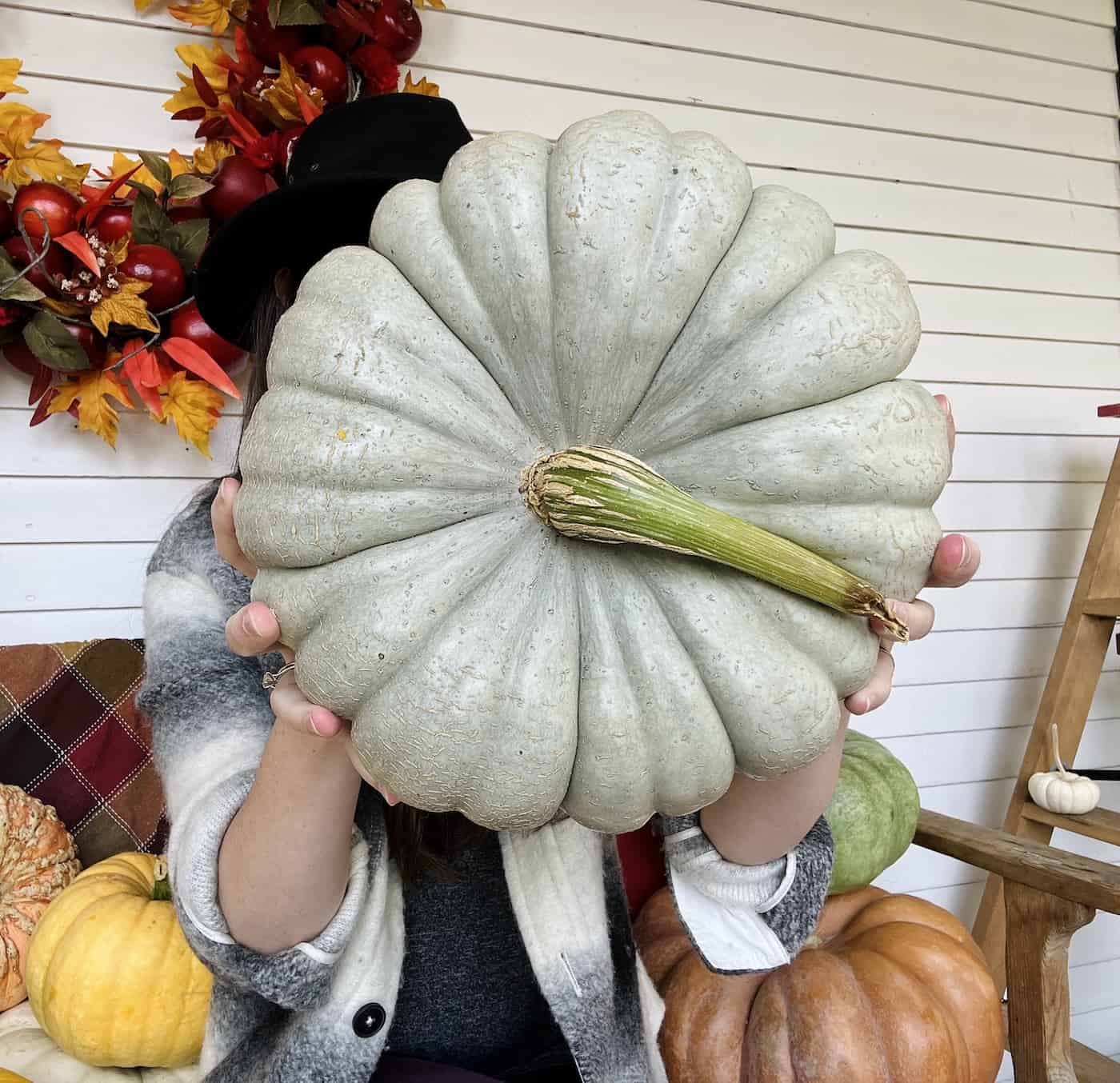
Jarrahdale pumpkin: The basics
The Jarrahdale Pumpkin (Cucurbita maxima ‘Jarrahdale’) is known for its blue-grey-green rind and rich, golden-orange flesh. They have deeply grooved ribs and are flatter in comparison to many other types of pumpkins.
Named after the small town of Jarrahdale, near Perth, Western Australia, this particular pumpkin is often used in pumpkin pie or other savory dishes. Jarrahdale is part of the Australian Blue Group, along with other popular heirloom varieties like Triamble, Queensland Blue, and Crown pumpkins.
“Down Under, nearly all the squash are blue, including the rounded sorts and the elongated Blue Hubbard and Blue Banana.”
The Compleat Squash: A Passionate Grower’s Guide to Pumpkins, Squash, and Gourds, By Amy Goldman
The bluish, grayish pumpkin is likely a cross between the Blue Hubbard Squash and Cinderella Pumpkins. The Jarrahdale gets its flattened shape from Cinderella and the taste and color from the Blue Hubbard.
Their beautiful rind is often used to decorate homes in the fall time. Specifically, they can be used to create a gorgeous table centerpiece or as a decorative display.
Although they aren’t the classic orange hue, these pumpkins can also be used for carving out Jack-o-Lanterns during the Halloween season.
Jarrahdale pumpkins are known to be medium, large, or even somewhat gigantic in size, depending on growing conditions. They vary in size anywhere between 6 to 12 pounds and can grow up to 24 inches in diameter.
Not only do the pumpkins grow rapidly, but the foliage and vines can also grow up to 30 feet long and 18 inches tall.
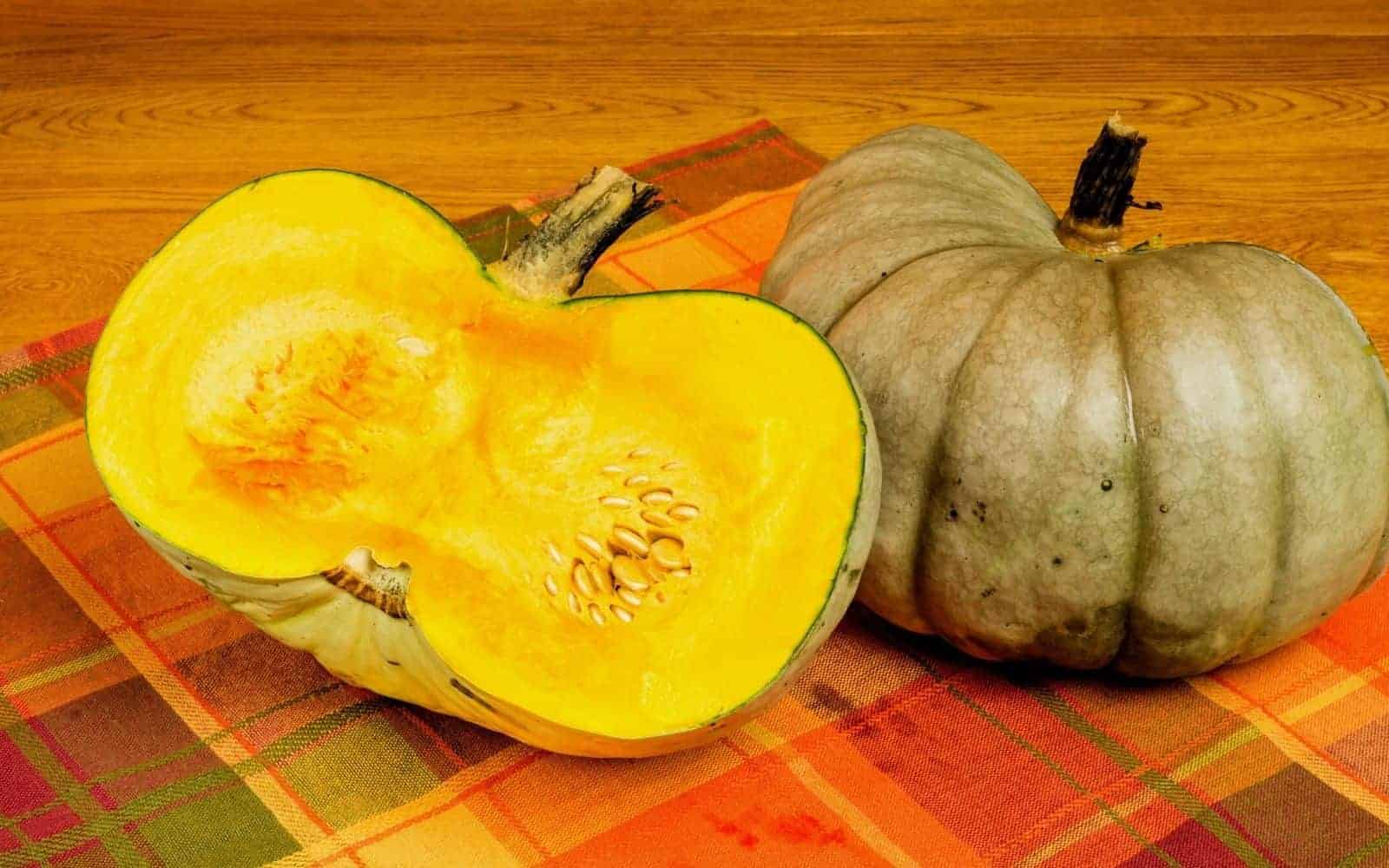
Cooking with Jarrahdale pumpkins
Jarrahdale pumpkins are true gourmet pumpkins. They are known for their sweet taste and are prized for use in pies, scones, soups, or stews, where they can make a fantastic upgrade in recipes that call for butternut squash. While Jarrahdale is certainly great for cooking with, Queensland Blue and Triamble are known for having a higher table vegetable quality.
They are often used for sweet dishes, but their flesh is versatile and can take on many different flavors. Jarrahdale pumpkins can be roasted in halves (375°F for ~50 minutes), steamed in wedges, or cut into chunks to stew in a pot.
It is a wonderful vegetable to use in the fall, not only because they taste good, but because they are in season and inexpensive. The Jarrahdale is also great for cooking because the flesh is firm and isn’t stringy, making it easy to clean out and utilize in many dishes.
When cooking with a Jarrahdale, slice up the pumpkin and clean out the seeds, then use the flesh for any recipe that you would like. When scooping out the seeds, you can decide to roast them or even dry them and save the seeds to start your own annual harvest of Jarrahdale pumpkins next season.
“Jarrahdale: Soft green exterior and melon-like interior.”
Purely Pumpkin: More Than 100 Seasonal Recipes to Share, Savor, and Warm Your Kitchen, by Allison Day
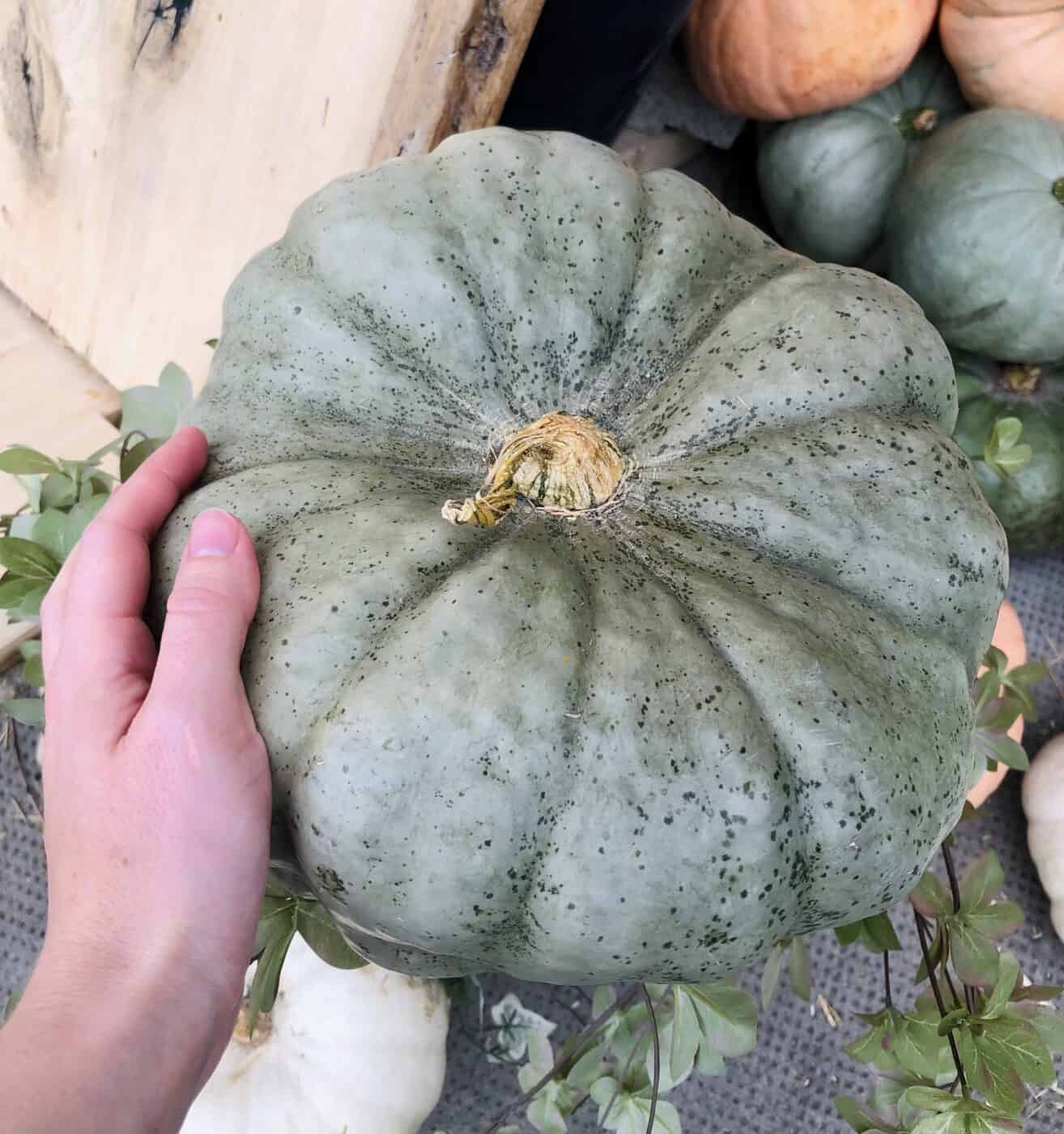
How to grow Jarrahdale pumpkins
Planting a Jarrahdale can be fairly easy since the plant grows rather quickly and is resistant to mildew and fungus. They grow fairly quickly but do take several months to get up to size – anywhere between 100 to 110 days or 18 to 20 weeks.
If you are interested in planting the pumpkin in your own home garden, there are a few crucial tips that you should keep in mind before you begin sowing the Jarrahdale seeds.
This member of the squash family does best when it’s planted outdoors rather than indoors. The Jarrahdale can initially be planted indoors, but will eventually need to be transferred to the ground for the best outcome.
Jarrahdale seeds can be planted in hardiness zones 2 through 12, but they do best in the warmer zones 6 through 12 due to the temperatures and amount of light available there (not to mention the earlier spring weather). The temperature should be consistently above 65 degrees Fahrenheit before you sow the seeds.
Before the seeds are sown, ensure that the soil that is being used has good drainage. This isn’t important for just the Jarrahdale variety, but any pumpkin in general. If they are not planted in soil that has good drainage, pumpkins could potentially face root rot.
The vines of the Jarrahdale can grow up to 30 feet long, so it is important to create enough distance between this plant and other items in a garden. Leaving 5 to 6 feet for the Jarrahdale pumpkin is a good idea so that the foliage doesn’t take over the other plants of the garden.
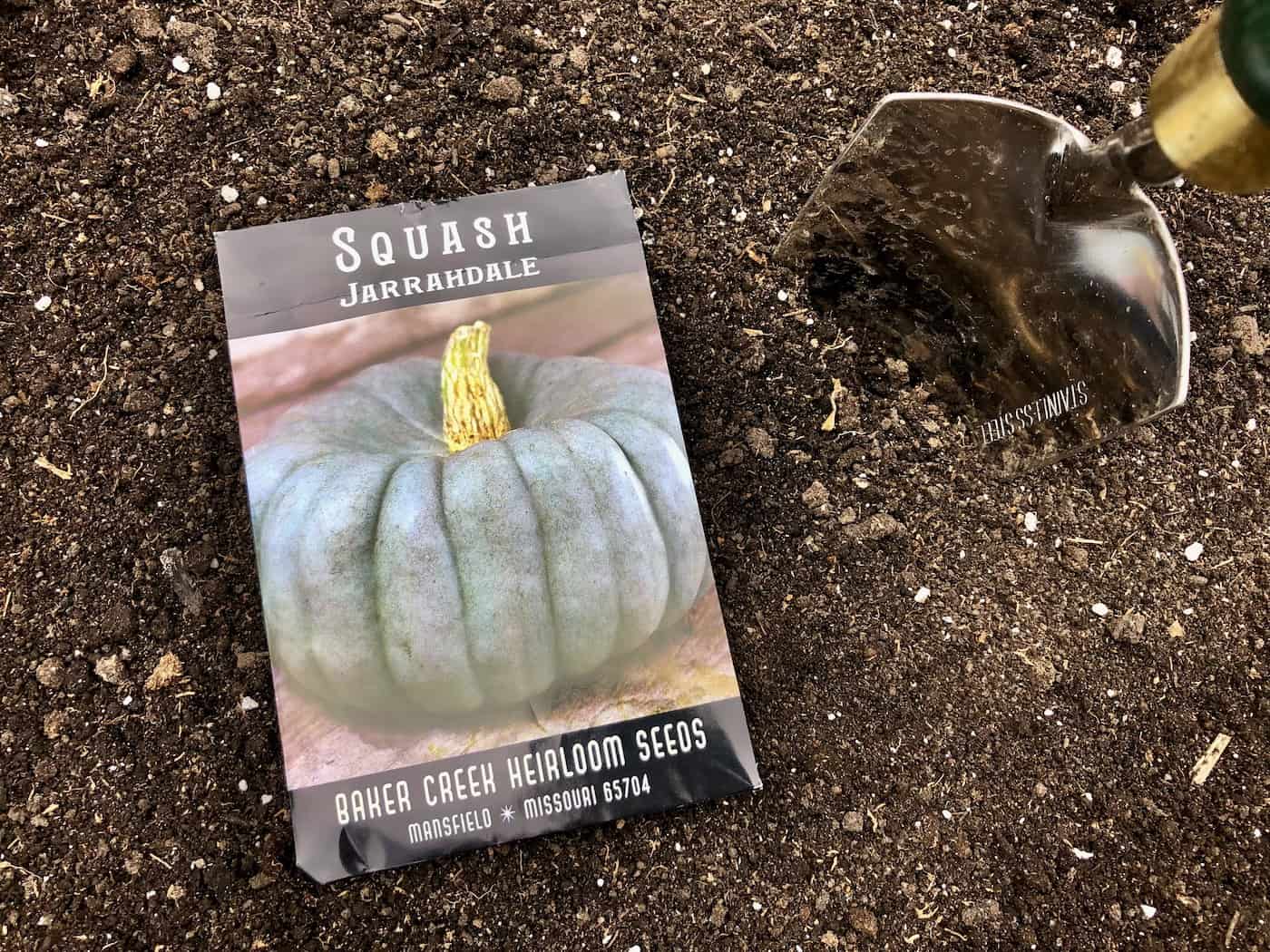
When planting a Jarrahdale seed, it’s crucial to sow the seeds in an area that gets at least 6 hours of sunlight each day.
They can be grown in partial shade, but some sunlight is crucial to their growth and health. When you have created a good location to grow your Jarrahdale pumpkins, you can start planting the seeds.
Start by creating mounds or hills that are about 6 to 12 inches high. Then, plant 3 seeds per mound and be sure that the seeds are about 1 inch deep into the soil. Planting them 1 inch deep ensures that the roots will take hold.
Caring for Jarrahdale pumpkin plants
When watering the Jarrahdale plants, it is best to use a drip irrigation system so that the mound of dirt can get evenly watered.
If you don’t have access to a drip irrigation system, using a hose or watering can work fine as well. Be sure to water the mound of dirt rather than the leaves. Wet leaves are at risk for a variety of diseases and fungal growth.
Pumpkins are 80 to 90 percent water, so it is crucial that you give them enough water. A tell-tale sign of a dehydrated pumpkin is if you spot the foliage wilting earlier in the morning.
It might be normal for the leaves to wilt in the high temperatures of the afternoon, but when the leaves wilt in cooler temperatures in the morning, be sure to give them more water. Pumpkins not only need a lot of water, but they also need nutrients from composts or fertilizers.
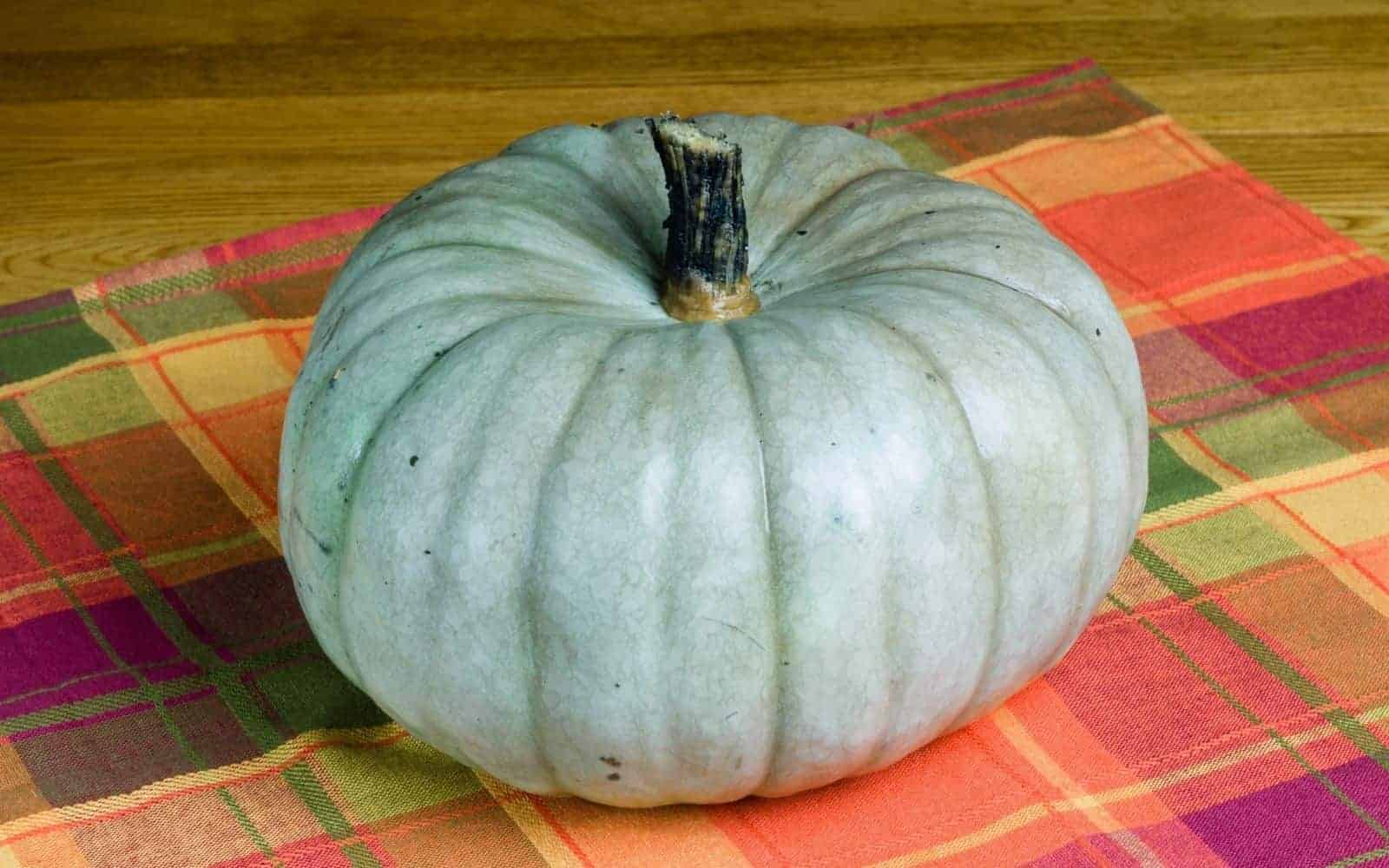
Harvesting Jarrahdale pumpkins
In the late summer, the pumpkins will be ready to harvest. When the leaves begin to dry out, then it is the optimal time for the pumpkins to be harvested and stored.
Be sure to harvest before the first frost, otherwise, the cold temperatures may damage the pumpkins and make them become mushy/soggy.
When Jarrahdale pumpkins are stored, it’s important that they do not get wet. Store them in an indoor location with temperatures between 70 and 80 degrees Fahrenheit for up to 90 days.
Similar pumpkin cultivars to Jarrahdale
Here are some pumpkin varieties with blue-grey peels, similar to Jarrahdale pumpkins:
- Queensland Blue Pumpkin
- Blue Doll Pumpkin
- Blue Moon Pumpkin
